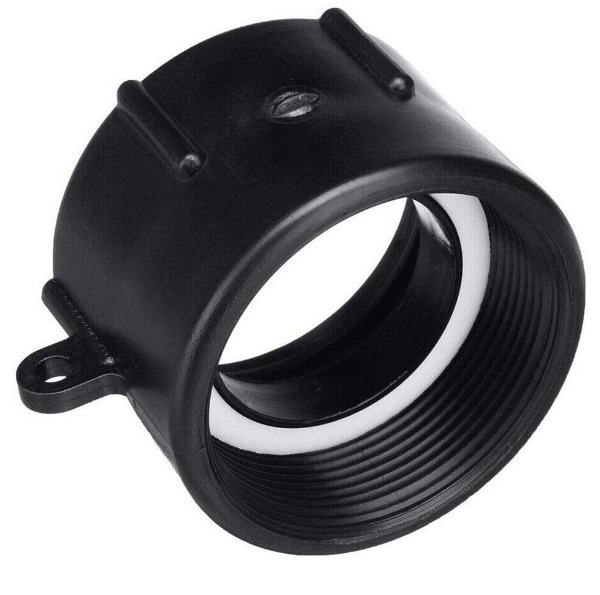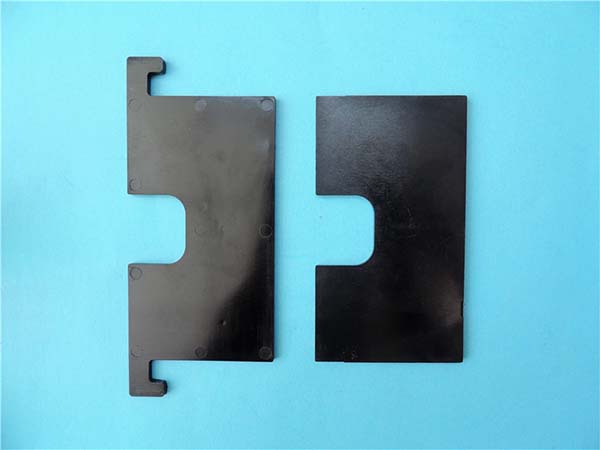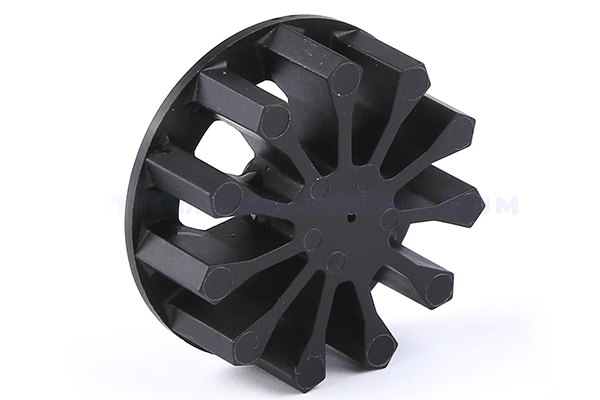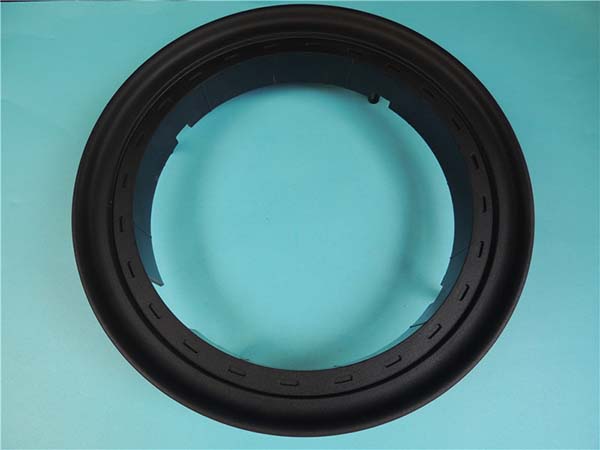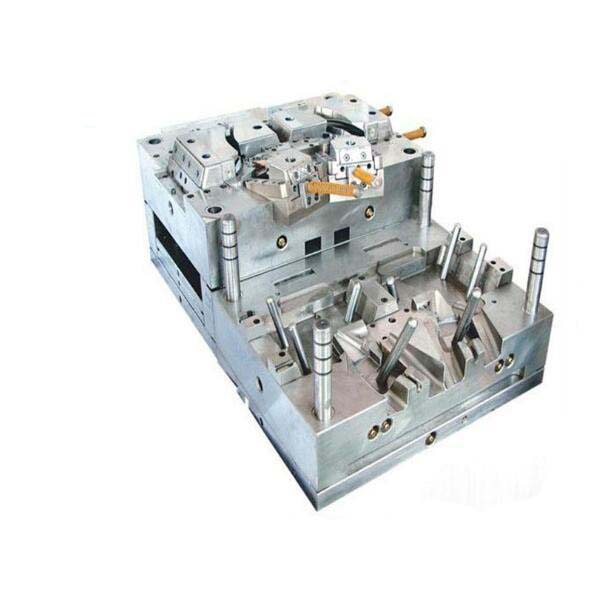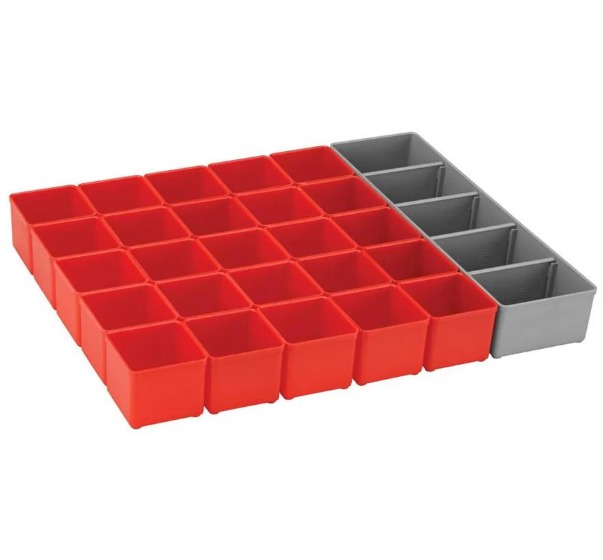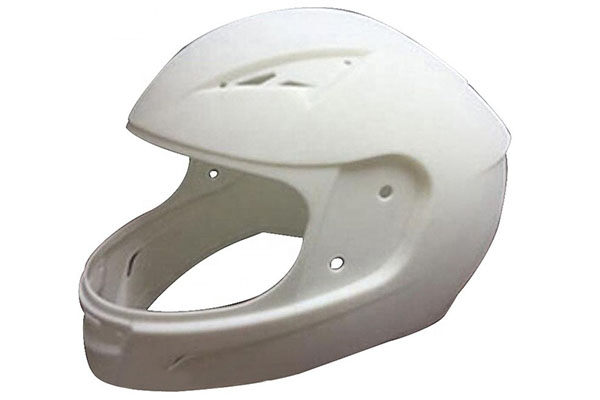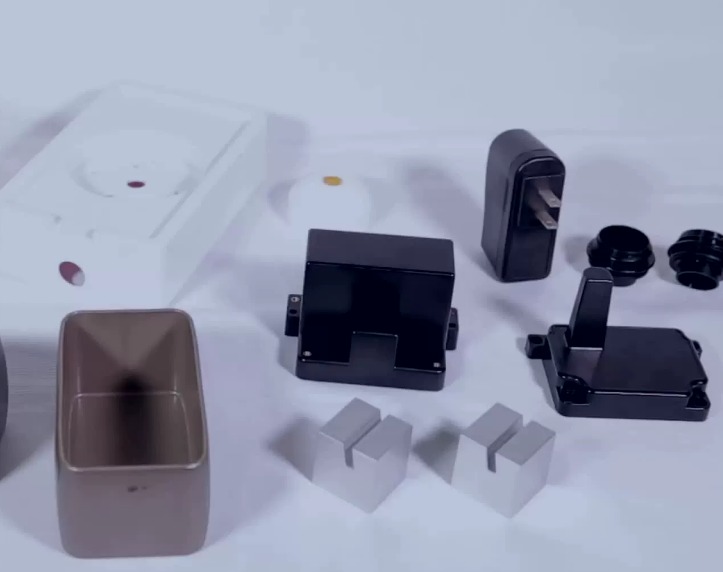Introduction
What is Injection Moulding?
Injection moulding is a widely - used manufacturing process for producing parts by injecting molten material, typically plastic (either thermoplastic or thermosetting polymers), into a mould cavity. Here's a step - by - step breakdown of how it works:
- Material Feeding: First, the raw material, usually in pellet form, is fed into a heated barrel of the injection moulding machine. For Yigu Technology example, if we are making plastic toys, plastic pellets are poured into the machine's hopper.
- Melting and Mixing: Inside the heated barrel, the material is melted and thoroughly mixed. The temperature is carefully controlled to ensure the material reaches the optimal viscosity for injection. For thermoplastics like polyethylene, the melting temperature might be around 130 - 170°C, depending on the grade.
- Injection: Once the material is in a molten state, it is forced, either by a piston or a screw mechanism, through a nozzle and into a closed mould cavity. The pressure applied during injection can range from 50 - 200 MPa, depending on the complexity of the mould and the material being used.
- Cooling and Solidification: After filling the mould, the molten material cools down within the mould cavity. As it cools, it solidifies, taking on the shape of the cavity. The cooling time varies based on factors such as the thickness of the part and the material properties. For thin - walled plastic parts, the cooling time might be just a few seconds, while for thicker components, it could be several minutes.
- Ejection: Once the part has fully solidified, the mould opens, and the finished part is ejected, ready for further processing or assembly.
Importance of Shaping Precision and Efficiency
Shaping precision is crucial in injection moulding for several reasons. Tolerance Compliance: In many industries, such as automotive and aerospace, parts need to meet tight tolerances. For Yigu Technology example, in automotive interior components, the parts must fit together seamlessly. A deviation of even a fraction of a millimeter can lead to issues like gaps between parts, which not only affect the aesthetics but also the functionality. In the aerospace industry, precision is even more critical, as any inaccuracies can compromise the safety and performance of the aircraft.
Functionality Assurance: Precision - moulded parts ensure proper functionality. Consider a plastic gear produced through injection moulding. If the teeth of the gear are not precisely formed, it can cause uneven meshing with other gears, leading to increased wear, noise, and potential failure of the mechanical system.
Efficiency in injection moulding is equally important. Cost - effectiveness: Higher efficiency means more parts can be produced in a given time. This reduces the cost per part, as the fixed costs of running the injection moulding machine (such as energy consumption, labour, and machine depreciation) are spread over a larger number of units. For instance, if a machine can produce 100 parts per hour with a certain process setup and by optimizing the process, it can produce 120 parts per hour, the cost per part will decrease significantly.
Meeting Market Demands: In today's fast - paced market, companies need to quickly respond to customer demands. An efficient injection moulding process allows manufacturers to ramp up production rapidly when there is a sudden increase in demand for a product, giving them a competitive edge.
Factors Affecting Shaping Precision
Mould Design
Mould design is the cornerstone of achieving high - shaping precision in injection moulding. Tolerance Control: The tolerance defined in the mould design directly impacts the precision of the final product. For Yigu Technology example, if the mould is designed with a tight tolerance of ±0.05 mm for a critical dimension of a plastic component, the produced parts are expected to fall within this narrow range. A well - designed mould will have precise machining of its cavities and cores. In high - precision moulds, the machining accuracy can reach up to ±0.01 mm or even higher in some advanced manufacturing scenarios.
Parting Line Selection: The choice of the parting line is crucial. An improper parting line can lead to flash (thin excess material at the edges) or misalignment of the mould halves during closing, which in turn affects the dimensional accuracy of the part. For instance, in the production of a complex - shaped plastic housing, if the parting line is not carefully selected, there may be uneven thickness around the edges, causing the housing to have gaps when assembled.
Material Selection
Different materials have distinct properties that significantly influence the shaping precision. Thermal Expansion and Contraction: Materials like polypropylene (PP) have a relatively high coefficient of thermal expansion. When cooled after injection, PP parts tend to shrink more compared to materials like polycarbonate (PC). The shrinkage rate of PP can be around 1 - 2%, while PC has a lower shrinkage rate of about 0.5 - 0.7%. This difference means that for a part with a nominal size of 100 mm, a PP - made part may shrink by 1 - 2 mm, while a PC - made part will shrink by only 0.5 - 0.7 mm.
Viscosity: High - viscosity materials are more difficult to flow evenly into the mould cavity. For example, some high - molecular - weight engineering plastics require higher injection pressures to fill the mould completely. If the viscosity is not properly considered during material selection and process design, it can lead to incomplete filling, short shots, or uneven distribution of material within the part, all of which affect the shaping precision.
Process Parameters
Process parameters play a vital role in determining the shaping precision. Temperature: The temperature of the melt and the mould has a profound impact. A higher melt temperature can reduce the viscosity of the material, making it flow more easily into the mould cavity. However, if the melt temperature is too high, it can cause degradation of the material and dimensional instability. For a typical thermoplastic like ABS, the recommended melt temperature is around 200 - 240°C. If the temperature is set at 260°C, the ABS may start to decompose, leading to a change in its physical properties and affecting the precision of the final part.
Pressure: Injection pressure and holding pressure are key. Injection pressure ensures that the molten material fills the mould cavity completely. Holding pressure is applied after filling to compensate for the shrinkage of the material as it cools. In a study, when the injection pressure was increased from 80 MPa to 100 MPa for a small plastic part, the filling time decreased from 0.5 s to 0.3 s, and the part's dimensional accuracy improved as it was more fully filled. But if the holding pressure is too high, it can cause over - packing, resulting in parts with excessive density and potential deformation.
Speed: The injection speed affects how quickly the material fills the mould. A slow injection speed may lead to premature cooling of the material at the gate, causing flow marks and uneven filling. On the other hand, an extremely high injection speed can create high shear stress in the material, which may lead to molecular orientation and warping of the part. For a thin - walled plastic container, an injection speed of 50 - 80 mm/s is often optimal to ensure both filling efficiency and shaping precision.
Factors Affecting Efficiency
Cycle Time
Cycle time is a critical factor in determining the efficiency of injection moulding. It refers to the time taken to complete one full cycle of the injection moulding process, from the injection of the molten material into the mould until the ejection of the finished part. A shorter cycle time means that more parts can be produced in a given period.
There are several ways to reduce cycle time. Optimizing Cooling: The cooling phase often accounts for a significant portion of the cycle time. Using efficient cooling channels within the mould can speed up the cooling process. For Yigu Technology example, conformal cooling channels, which are designed to follow the shape of the part, can provide more uniform cooling. In a study on producing plastic bottle caps, the use of conformal cooling reduced the cooling time by 30%, resulting in a 20% increase in production output per hour.
Reducing Injection and Holding Times: By fine - tuning the injection speed and pressure, as well as the holding time, the time spent in these stages can be minimized. However, this must be done carefully to avoid compromising the quality of the part. For instance, for a simple plastic toy part, reducing the injection time from 0.8 s to 0.6 s and the holding time from 1.5 s to 1.2 s, while maintaining proper process conditions, can shorten the overall cycle time by about 20%.
Machine Performance
The performance of the injection moulding machine plays a decisive role in the efficiency of the process. Injection Speed: A high - speed injection can quickly fill the mould cavity. Modern injection moulding machines are capable of achieving very high injection speeds. For Yigu Technology example, some advanced machines can reach injection speeds of up to 500 - 1000 mm/s. When producing thin - walled plastic products like disposable cups, a high injection speed of 800 mm/s can fill the mould in a fraction of a second, compared to a slower - speed machine that might take several seconds. This not only increases the production rate but also helps in maintaining the integrity of the thin - walled structure.
Clamping Force: Sufficient clamping force is essential to keep the mould closed during injection. If the clamping force is too low, the mould may open slightly, causing flash (excess material at the edges). On the other hand, an overly high clamping force can lead to excessive wear on the mould and the machine. For a medium - sized injection moulding machine used for producing automotive interior parts, a clamping force of 1000 - 1500 tons might be required. A well - maintained machine with the right clamping force setting can ensure continuous and efficient production, without the need for frequent adjustments due to mould - related issues.
Automation Level
Automation has revolutionized the injection moulding industry by significantly enhancing efficiency. Robotic Part Handling: Robots can be used to remove parts from the mould immediately after ejection. This eliminates the need for manual intervention, which is not only time - consuming but also prone to human error. For example, in a large - scale production facility that manufactures plastic electronic housings, a robotic arm can remove a part from the mould in just 1 - 2 seconds, compared to a human operator who might take 5 - 8 seconds. This allows for a much faster cycle time and reduces the risk of parts being damaged during removal.
Automated Material Feeding and Recycling: Automated systems can continuously feed raw materials into the injection moulding machine, ensuring a steady supply. Additionally, they can recycle excess or defective parts back into the production process. In a factory that produces plastic furniture components, an automated material handling system can increase the production efficiency by 30 - 40% by reducing downtime due to material shortages and efficiently managing waste materials.
Case Studies
Success Stories of High - Precision and High - Efficiency Injection Moulding
- Automotive Component Production
- Company Background: A leading automotive parts manufacturer was facing challenges in producing high - precision interior trim components. These components needed to fit perfectly within the vehicle's interior, with tight tolerances of ±0.1 mm.
- Challenges: Initially, the company was experiencing issues such as warping, flash, and inconsistent wall thickness in the injection - moulded parts. The cycle time was also relatively long, which affected the production rate.
- Solutions: They optimized the mould design. The parting lines were redesigned based on advanced flow simulation software, which helped to eliminate flash and ensure better material distribution. For material selection, they switched from a standard polypropylene to a high - performance, low - shrinkage polypropylene - based alloy. This reduced the shrinkage rate from 1.5% to 0.8%, improving the dimensional accuracy. In terms of process parameters, they fine - tuned the temperature profile. The melt temperature was adjusted from 220°C to 210°C, and the mould temperature was maintained at a more stable 45°C. The injection pressure was increased from 90 MPa to 105 MPa, and the injection speed was optimized to 60 mm/s.
- Results: These improvements led to a significant reduction in defect rates, from 15% to less than 5%. The cycle time was reduced by 25%, from 45 seconds per part to 33.75 seconds per part. This not only improved the shaping precision but also increased the production efficiency, allowing the company to meet the growing demands of the automotive market.
- Medical Device Manufacturing
- Company Background: A medical device company was manufacturing disposable syringe barrels using injection moulding. The syringes required extremely high precision to ensure accurate dosing and proper functionality.
- Challenges: The main challenges were related to the complex shape of the syringe barrel and the need to maintain strict tolerances, especially around the tip and the plunger - fitting area. The existing process had a low production rate, which was not sufficient to meet the high - volume demands of the medical industry.
- Solutions: The mould was designed with high - precision machining techniques, achieving a tolerance of ±0.03 mm in critical areas. A special grade of medical - grade polypropylene, known for its excellent flow properties and stability, was selected. The injection moulding machine was upgraded to a high - performance model with precise control over process parameters. The injection speed was set to 70 mm/s to ensure quick filling without causing any turbulence. The holding pressure was carefully adjusted to compensate for the shrinkage during cooling. Additionally, an automated robotic system was installed for part handling and quality inspection.
- Results: The defect rate of the syringe barrels was reduced to less than 1%. The production efficiency increased by 40%, with the machine being able to produce 300 more syringes per hour. The high - precision injection moulding process ensured that the syringes met all the strict quality standards required by the medical industry, enhancing the company's reputation and market share.
Tips for Improving Shaping Precision and Efficiency
Practical Suggestions for Mould Designers and Operators
For Mould Designers:
- Use Advanced Design Software: Employ computer - aided design (CAD) and computer - aided engineering (CAE) software. CAD software allows for highly accurate 3D modelling of the mould. CAE software, on the other hand, can simulate the injection moulding process. For example, it can predict material flow, temperature distribution, and potential areas of warping or incomplete filling. By using these tools, designers can identify and correct design flaws before the mould is actually manufactured. A study showed that companies that used CAE software for mould design reduced their mould - related defects by 40 - 50%.
- Optimize Cooling Channel Design: As mentioned before, cooling is a crucial part of the injection moulding process. Design cooling channels that are close to the mould cavity surface and follow the shape of the part as much as possible. This ensures uniform cooling and reduces the risk of warping. For complex - shaped parts, consider using conformal cooling channels. Although they may be more expensive to manufacture, the long - term benefits in terms of part quality and production efficiency are significant. For instance, in the production of a large - scale plastic housing, conformal cooling channels reduced the cycle time by 15 - 20% compared to traditional cooling channels.
For Operators:
- Regular Machine Maintenance: Keep the injection moulding machine in top - notch condition. Regularly check and maintain components such as the injection unit, clamping unit, and hydraulic system. For example, clean the injection nozzle regularly to prevent blockages that can affect the injection pressure and material flow. Replace worn - out parts promptly. A well - maintained machine is less likely to experience breakdowns, which can disrupt production and increase costs. In a factory, regular maintenance reduced machine downtime by 30%, leading to a corresponding increase in production output.
- Precise Process Parameter Control: Operators should have a deep understanding of the impact of process parameters on the final product. Monitor and adjust parameters such as temperature, pressure, and speed in real - time. Use sensors and control systems to ensure accurate parameter settings. For example, if the part shows signs of short shots (incomplete filling), the operator can gradually increase the injection pressure while closely observing the part quality. This hands - on approach can lead to better - quality parts and higher production efficiency.
Conclusion
Injection moulding is a complex and dynamic manufacturing process, where both shaping precision and efficiency are of utmost importance. The key factors affecting shaping precision include mould design, material selection, and process parameters. A well - designed mould with precise tolerances and proper parting line selection sets the foundation for high - precision parts. Careful material selection, considering properties like thermal expansion and viscosity, is essential to minimize dimensional variations. Precise control of process parameters such as temperature, pressure, and speed ensures that the molten material fills the mould accurately and solidifies to the desired shape.
Efficiency in injection moulding is mainly influenced by cycle time, machine performance, and the level of automation. Reducing cycle time through optimized cooling, injection, and holding times can significantly increase the number of parts produced per unit time. High - performance injection moulding machines with fast injection speeds and appropriate clamping forces enable faster and more reliable production. Automation, in the form of robotic part handling and automated material feeding, not only speeds up the process but also reduces human - related errors and downtime.
By understanding and optimizing these factors, mould designers and operators can achieve a balance between shaping precision and efficiency. This not only leads to the production of high - quality parts that meet strict industry standards but also allows manufacturers to be competitive in the market by reducing production costs and increasing output. In today's manufacturing landscape, where quality and speed are highly valued, mastering the art of injection moulding for both precision and efficiency is the key to success.
FAQs
- Q1: How does mould temperature affect injection moulding precision?
A: Mould temperature determines the cooling speed of the molten material. A lower mould temperature leads to faster cooling, which can increase viscosity and injection pressure loss, potentially causing incomplete filling. Higher mould temperatures improve melt flow and surface quality but may increase cycle time and part shrinkage. For crystalline plastics, higher temperatures can also affect the degree of crystallinity.
- Q2: What are the common defects in injection moulding related to low efficiency?
A: Low efficiency can lead to issues like short shots (incomplete filling) due to slow injection or insufficient pressure. Long cycle times can also cause warping as the part cools unevenly during extended cooling periods. Additionally, inconsistent process parameters due to inefficient machine operation can result in variations in part quality, such as inconsistent wall thickness.
- Q3: Can the same injection moulding machine be used for different materials?
A: In most cases, the same injection moulding machine can be used for different materials, but adjustments are usually required. Different materials have different melting points, viscosities, and processing requirements. For example, a machine may need to have its temperature settings adjusted, and the injection pressure and speed may need to be optimized when switching from a low - viscosity material like polyethylene to a high - viscosity engineering plastic. However, some materials may also require specific machine components, such as special screws or barrels, to ensure proper processing.
